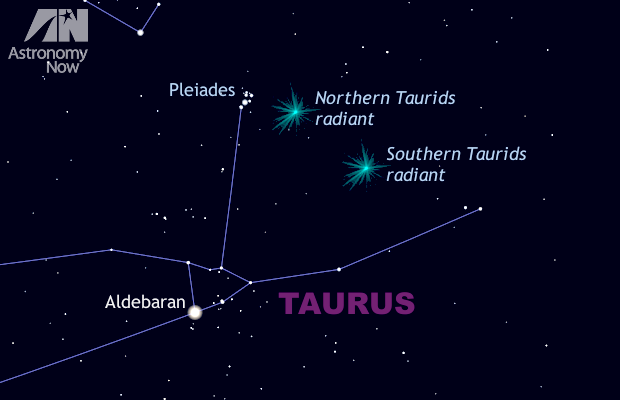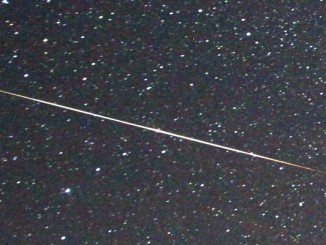
The Taurid meteors, so named since they appear to come from the constellation Taurus, originate from the debris stream of Comet 2P/Encke which the Earth encounters between 20 October and 30 November each year. The shower displays two distinct peaks — the Southern Taurids on 5 November and the Northern Taurids on 12 November. In this interval one may expect about half a dozen slow, but often bright meteors per hour (particularly bright shooting stars are called fireballs) as seen from a dark location free of light pollution.
The exciting aspect of the Taurids is that the debris from Comet 2P/Encke is larger than typical meteoroids which are about the size of a grain of sand. A pebble-sized Taurid entering the Earth’s atmosphere at 62,000 miles (100,000 kilometres) per hour — that’s 17 miles per second — is going to burn up due to friction with the air in a fraction of a second producing a fireball potentially rivalling planet Venus in brightness.
Meteor expert David Asher of the Armagh Observatory in Northern Ireland calculated that this year the Earth would pass through the same stream of large meteoroids that produced the excellent displays of 2005. Given the reports from around the world in recent days, it looks like he was right. And if Asher’s predictions hold true, we should still see further bright Taurids Monday and Tuesday night. The best time to look is around midnight, when the shower’s Southern and Northern radiants are high in the east.
For meteor viewing you need nothing more than your unaided eyes to enjoy the show, so wrap up extra warm (a hat is important too), find somewhere particularly dark yet secure, set up a garden lounger or deckchair facing east with a flask of your favourite hot beverage beside you and enjoy the show! And if you’re clouded out now, there’s the Leonid meteor shower to look forward to mid-month.
Inside the magazine
You can find out more about this month’s meteor showers and how to observe them in the November edition of Astronomy Now in addition to a full guide to the night sky.
Never miss an issue by subscribing to the UK’s biggest astronomy magazine. Also available for iPad/iPhone and Android devices.




